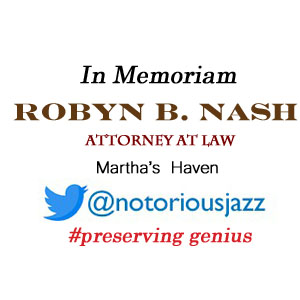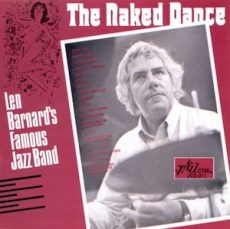
Daily Dose Of Jazz…
Leonard Arthur Barnard was born on April 23, 1929 in Melbourne, Victoria, Australia. Before forming his own traditional jazz band in the late 40s he played drums in the family band. This band, one of the earliest Australian groups to make jazz records, was so popular that it remained active for more than two decades.
During this same period Barnard played with other groups ranging from jazz to dance music. He gigged and recorded with Ade Monsbourgh and Dave Dallwitz. In the early 1970s his relocation to Sydney, Australia saw him playing with many of the country’s leading musicians including Errol Buddle and John Sangster. Then he joined Galapagos Duck, a band led by Tom Hare.
On occasion Len played with bands led by his younger brother, Bob Barnard. By the late 90s he remained active playing and recording with a variety of artists including Janet Seidel. His playing and able use of brushes made him an accomplished mainstream drummer.
Drummer Len Barnard, whose playing was forceful yet had a discreet and propulsive swing, died on November 5, 2005 in Sydney.
More Posts: bandleader,drums,history,instrumental,jazz,music
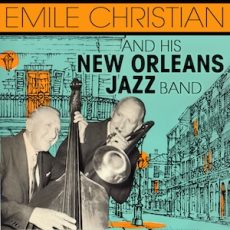
Daily Dose Of Jazz…
Emile Joseph Christian born April 20, 1895 in the Bywater neighborhood of New Orleans, Louisiana, was the younger brother of noted cornetist and bandleader Frank Christian. He played both cornet and trombone with the Papa Jack Laine bands. He went to Chicago, Illinois in late 1917 to play trombone with the Bert Kelly Jass Band. The following year he moved to New York City, replacing Eddie Edwards in the Original Dixieland Jass Band, touring England and making his first recordings with this band.
After a brief time in the Original Memphis Five, he returned to Europe and from 1924 into the 1930s, he played bass and trombone with various jazz bands. In Berlin, Germany he recorded, in Stockholm, Sweden he recorded with Leon Abbey’s band. In Paris, Nice and Aix-les-Bain, France he played with Tom Waltham’s Ad-Libs. In 1935 he played with Benny Peyton’s Jazz Kings in Switzerland.
Christian played in both Black and White bands in Europe and India before returning to the United States after the outbreak of World War II. The 1950s saw him moving back to New Orleans, where he played with the bands of Leon Prima, Santo Pecora, and Sharkey Bonano and his own band. In 1957 he toured with the Louis Prima Band and continued playing in New Orleans into 1969.
Trombonist and cornetist Emile Christian, who wrote a number of tunes and in his later years mostly playing string bass, died on December 3, 1973 in New Orleans at the age of 78.
More Posts: cornet,history,instrumental,jazz,music,string bass,trombone
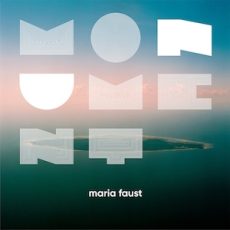
Daily Dose Of Jazz…
Maria Faust was born on April 18, 1979 in Kuressaare,, Estonia. Growing up under the Communist regime she was classically educated, and at the conservatory there, she didn’t feel that there was room for her, musically. Yearning for something different in Tallinn, jazz and improvisational music took hold of her, but in order to develop further, she had to leave the country. With the help of the Danish Cultural Institute, she came to the Southern Danish Music Conservatory. Even in her new surroundings, she felt she did not fit into the world of jazz.
She plays and composes in non-traditional ways, and her big breakthrough came with her album, Sacrum Facere, which is Latin for human sacrifice. It was inspired by the culture of deported orthodox Russians. With collected work songs, hymns, and lullabies she merged the material with classical music and free improvisation. The album received universally positive reviews, and received two Danish Music Awards in 2014 for Jazz Composer of the Year and Jazz Crossover Release of the Year.
She has worked with John Parish and Mark Howard. She tours western Europe, the Balkan Peninsula, South America, China, and Russia. Saxophonist Maria Faust, who has recorded nine albums as a leader, continues to push the boundaries of music.
More Posts: bandleader,bass,cornet,history,instrumental,jazz,music,trombone

Daily Dose Of Jazz…
Nick Paul was born on April 5, 1939 and raised in London, England. Growing up while playing a host of woodwind instruments his influences were George Lewis and John Handy.
Very active during the 60s, 70s and 80s in the south of England, in Europe he also played New Orleans Jazz. Paul played with many bands including The Barry Martin Ragtime Band, Malc Murphy’s Storyville Stompers, Bill Brunskil, The New Iberia Stompers, The New Revival Jazz Band. He spent time in New Orleans listening to the masters and improving his knowledge of the music.
Leaving England in 1987 for sunnier climes, Nick lived aboard his sailing boat Storyville in Cyprus for ten years playing in hotels and clubs. His musical tastes broadened and for the last twelve years he has been playing mainly small group swing and mainstream jazz of the 50s era.
Woodwind master Nick Paul, who now lives in Thailand, is still playing and has established a small recording studio.
More Posts: history,instrumental,jazz,music,woodwinds
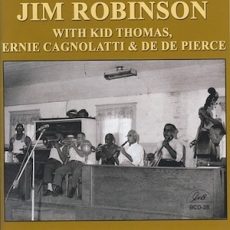
Daily Dose Of Jazz…
Cag Cagnolatti was born Ernie Joseph Cagnolatti on April 2, 1911 in Madisonville, Louisiana. He was one of six children sharing Italian and African American parentage and raised Catholic.
Cagnolatti began on trumpet around 1929 and played with Herbert Leary from 1933 to 1942, as well as off and on with Sidney Desvigne and Papa Celestin. He was a recurring member of many of the major New Orleans brass bands; he worked in the bands of George Williams in the 1940s and 1950s, and with Alphonse Picou in the early 1950s.
He recorded with Paul Barbarin repeatedly over the course of the 1950s and 1960s. He and Jim Robinson collaborated in the early 1960s, and he also recorded with Harold Dejan in 1962 and with the Onward Brass Band in 1968. From 1974 to 1980 Cagnolatti was a mainstay at Preservation Hall.
He suffered a stroke in 1980 and did not play afterwards. Trumpeter Cag Cagnolatti, affectionately known as Little Cag, died in New Orleans, Louisiana on April 7, 1983.
More Posts: history,instrumental,jazz,music,trumpet


